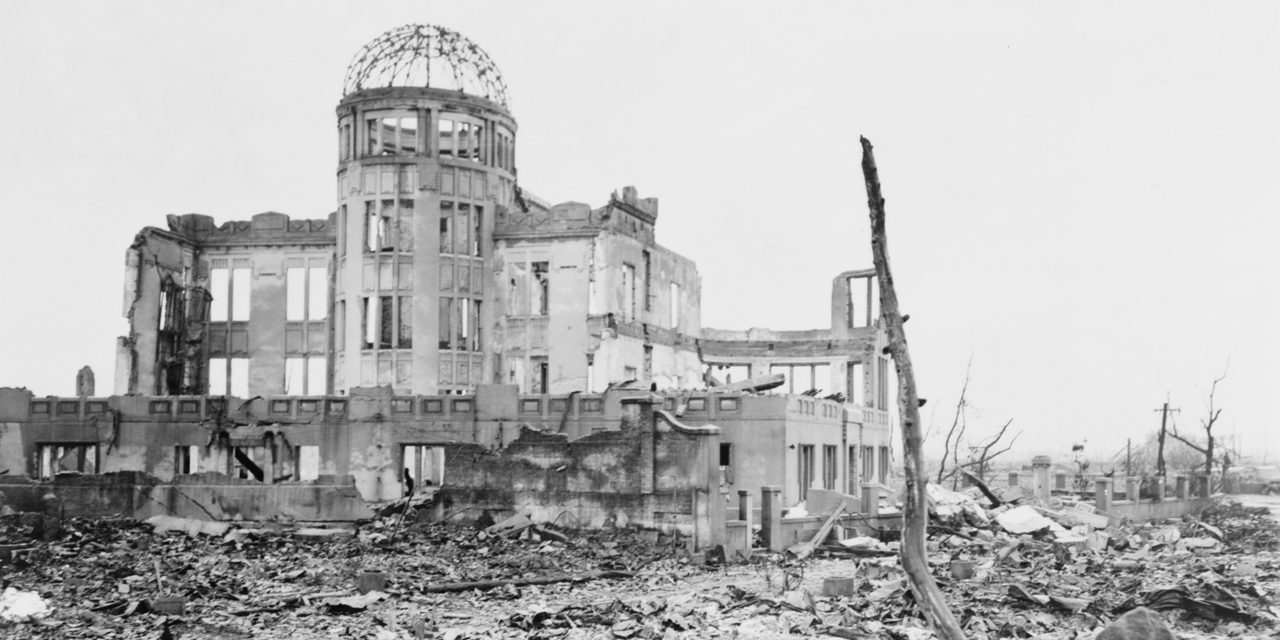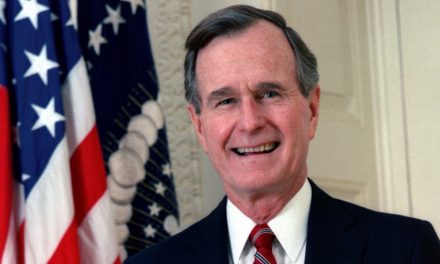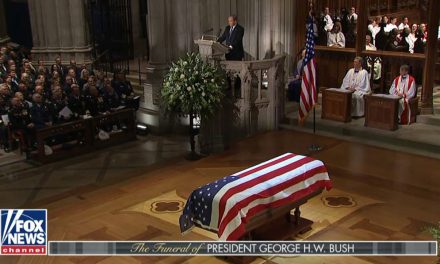Today marks the 75th anniversary of the atomic bombing of Hiroshima, Japan. The event was both historic and devastating. The bomb was a culmination of years of research and development, and a weapon that still elicits fear and continues to impact global policies today.
In the summer of 1945, the War in Europe had ended, but the War in the Pacific was still raging with no end in sight. Military officials had two options: either continue with a full invasion of Japan with at least a million projected U.S. casualties and an unknown number of civilian Japanese casualties, or use the atomic bombs developed in secret by the Manhattan Project as a shock and awe tactic that could force the Japanese to offer their unconditional surrender. It could also simultaneously prevent the Soviet Union from joining the conflict from Manchuria.
“We faced a terrible decision,” James Byrnes, the newly appointed Secretary of State who was the first to inform new President Harry Truman about the existence of the bombs, wrote in 1947. “We could not rely on Japan’s inquiries to the Soviet Union about a negotiated peace as proof that Japan would surrender unconditionally without the use of the bomb. In fact, Stalin stated the last message to him had said that Japan would ‘fight to the death rather than accept unconditional surrender.’ Under the circumstances, agreement to negotiate could only arouse false hopes.”
In an apologia explaining the reason why the United States dropped the bomb, Secretary of War Henry Stimson wrote in Harper’s Bazaar, “My chief purpose was to end the war in victory with the least possible cost in the lives of the men in the armies which I had helped to raise. In the light of the alternatives which, on a fair estimate, were open to us I believe that no man in our position and subject to our responsibilities, holding in his hands a weapon of such possibilities for accomplishing this purpose and saving those lives, could have failed to use it and afterwards looked his countrymen in the face.”
Every decision had the risk of massive casualties and the fear of a potential Soviet intervention deeply concerned U.S. officials. The Iron Curtain was beginning to form, and to have it form in Asia as well would have been unacceptable. The decision was made, the atomic bomb was the best chance at bringing the war to a swift end.
The morning of August 6, 1945, was like most others in Hiroshima. Men, women and children were in the process of preparing for a possible U.S. land invasion, like most of the country. The purpose was to pull the United States into a war of attrition, where every citizen would resist with everything they had. There were even teams working on creating fire lines in the city streets for the upcoming battles.
When the planes were first spotted in the sky, the people didn’t give them any mind. The Enola Gay, which dropped the bomb, and its escorts were flying too high for most bombing campaigns, which usually occurred at night to conceal the movement of planes that had to fly low to have a chance at hitting the appropriate targets.
The Enola Gay was a plane specially made for the sole purpose of dropping the bomb. In order to avoid the worst of the shockwave, the Enola Gay had to make a sharp turn right after dropping the bomb that most other planes could not make. The crew trained for months in the desert to pull this off and had no idea what they were carrying until they boarded the craft that August morning.
One the side of the bomb, nicknamed ‘Little Boy’ for its shape, were messages, including, “Greetings to the Emperor from the men of the (U.S.S.) Indianapolis,” which actually brought some of the components of ‘Little Boy’ from the United States to its Pacific base and was later sunk by a torpedo the week before on July 30.
According to Paul Tibbets, the pilot of the Enola Gay, after dropping the atomic bomb, he said, “I threw off the automatic pilot and hauled Enola Gay into the turn. I pulled antiglare goggles over my eyes. I couldn’t see through them; I was blind. I threw them to the floor. A bright light filled the plane. Then first shock wave hit us…We turned back to look at Hiroshima. The city was hidden by that awful cloud…boiling up, mushrooming, terrible and incredibly tall.
“No one spoke for a moment; then everyone was talking. I remember (Robert) Lewis pounding my shoulder, saying, ‘Look at that! Look at that! Look at that!’ Tom Ferebee wondered about whether radioactivity would make us all sterile. Lewis said he could taste atomic fission. He said it tasted like lead.”
In a postwar interview, Lewis said, “I don’t believe anyone ever expected to look at a sight quite like that. Where we had seen a clear city two minutes before, we could now no longer see the city. We could see smoke and fires creeping up the sides of the mountains.”
Three days later, the second atomic bomb, nicknamed ‘Fat Man,’ was dropped on Nagasaki. Japan offered its unconditional surrender just days later, and the world hasn’t been the same.
There are people who question whether the atomic bomb should have been used at all in combat. Even some of the scientists who created the bomb lived with a sense of regret over its devastating creation. But in war, there are no good options.
Robert Stimson perhaps said it best, “In this last great action of the Second World War we were given final proof that war is death. War in the twentieth century has grown steadily more barbarous, more destructive, more debased in all its aspects. Now, with the release of atomic energy, man’s ability to destroy himself is nearly complete. The bombs dropped on Hiroshima and Nagasaki ended a war. They also made it wholly clear that we must never have another war. This is the lesson man and leaders everywhere must learn, and I believe that when they learn it, they will find a way to lasting peace. There is no other choice.”
Photo from Everett Collection / Shutterstock.com
Visit our Election 2020 page






